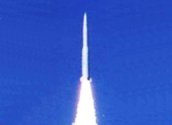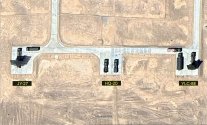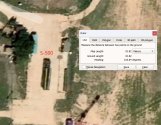Anyone know what HQ-20 does differently than other SAM?
You are using an out of date browser. It may not display this or other websites correctly.
You should upgrade or use an alternative browser.
You should upgrade or use an alternative browser.
PLA Anti-Air Missile (SAM) systems
- Thread starter FORBIN
- Start date
How? We just came to know the name.Anyone know what HQ-20 does differently than other SAM?
If we take a theory, likely there's imminent generation change, which for inherently modular SAM leads to crowd of system combinations.
I.e. there's system to this, we just don't see it yet.
Future replacement for HQ-16?Anyone know what HQ-20 does differently than other SAM?
I'm pretty sure that's just the TEL for what we previously referred to as HQ-26? But we never got its official designation. We'll see though in a few weeks, I could be wrong.
escobar
Brigadier
So how many new sam systems do we have now?
Hq-19, 20 and 29?
Hq-19, 20 and 29?
Some information on weibo. HQ-20 is anti-stealth SAM system guided by UHF/VHF radarAnyone know what HQ-20 does differently than other SAM?
I don’t think the HQ-20 itself is strongly tied to UHF/VHF radar.Some information on weibo. HQ-20 is anti-stealth SAM system guided by UHF/VHF radar
A more likely scenario is that the PLAAF has enhanced the configuration of air defense units by incorporating more and better UHF/VHF radars.
Last edited:
Don't want to post like a nerd but it is all so tiresome that "commentator" keep saying the line "Oh wait that's a Chinese S-500."
View attachment 158932
View attachment 158933
Yeah it's 40% longer than S-500 which is separate to the new A-235 BMD missile fielded by Russia. However China does its own very long history of BMD missiles too.
Well China's known to have completed many ballistic missile intercepts since I can remember. I recall several being reported even before 2010. Let's also remember that China conducted an ASAT which is technically more difficult than BMD. Done with a kinetic kill warhead on the first shot back in 2007. During the last decade an a half, we've heard about Chinese BMD including hints that some or all could be designated as HQ-19, HQ-26, HQ-29, and SC-x series.
China's first attempts at starting BMD programs began back in the 1960s with the FJ program and Project 640. These came out with at least the HQ-1, HQ-4, and HQ-81 missiles. None of this BMD business is new for China. In fact the radar side of the problem has long been even stronger. Radar isn't half an issue. EW, Countermeasure and defeating countermeasures are probably greater struggles on the digital side.
View attachment 69718
HQ-4 BMD
View attachment 69719
FJ-1 aka HQ-81 missile
None of China's previous BMD programs really had much worth just like the American and Soviet counterparts. They were utterly pointless because the limits in fuel and guidance tech simply didn't guarantee much if anything and then there is the geographic positioning and range issue. After all that there is the numbers/attrition problem. The numbers problem still exist but if you're aim is to defeat North Korean or Indian missiles from hitting important targets, then these are absolutely must haves.
What makes SM-3 arguably the most effective ABM system is its mobility or rather the mobility of the platform it sits on. China has no such equivalent.
SM-3 equivalent is practically a given.
It also studied both Soviet and American BMD developments and doctrine. China's stepped ahead with anti-HGV and HCM intercept practising in the past decade. US has only been planning and thinking about anti HGV as far as it is known. Intercepting MaRV has only become a relatively recent ability.
HQ-19 and HQ-29 and the SC series ASAT weapons are only made known officially now these missiles have become mainstays.
There's also this missile which was speculated to be HQ-19 in the past but clearly isn't. Then speculated to be the ship launched YJ-20 and now basically can be confirmed to not be. It's definitely not a YJ or DF missile. HQ-19 and HQ-29 can be ruled out now - HQ-19 looks completely different and HQ-29 probably won't have this sort of fins for booster. Looks like an earlier ship launched ABM interceptor or long range SAM.




